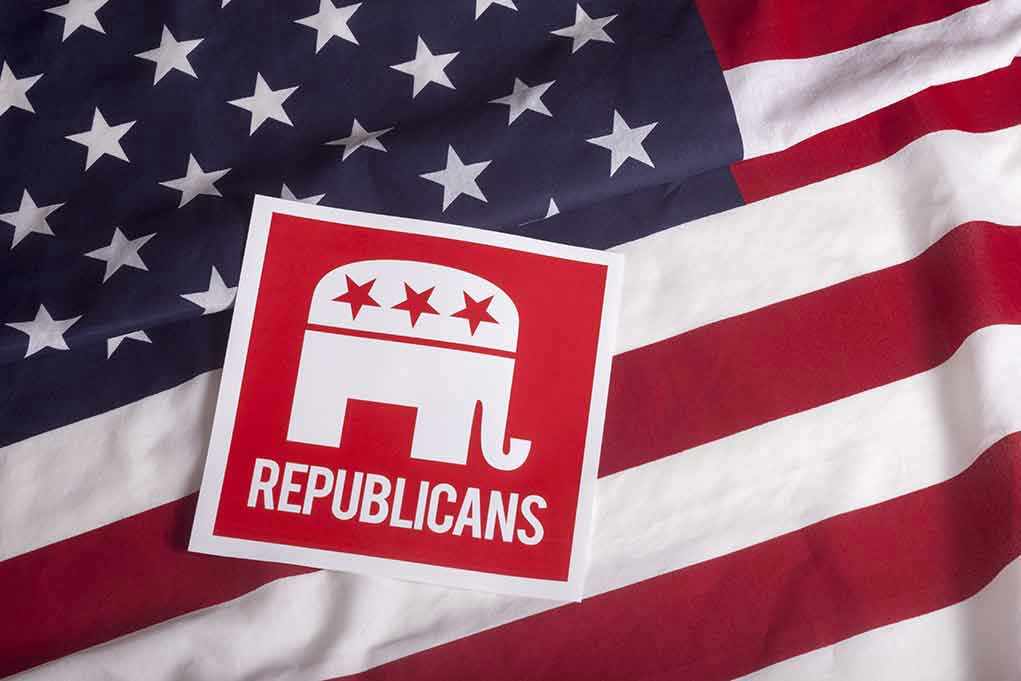
Republicans are betting the farm on Donald Trump and JD Vance to defy decades of political gravity and hold Congress in 2026 by selling the most sweeping conservative legislation in a generation—even as critics sharpen their knives and party rifts refuse to heal.
At a Glance
- GOP leadership is relying on President Trump and Vice President Vance to spearhead 2026 midterm campaigning.
- Trump’s “big, beautiful bill”—a massive tax and spending overhaul—has become the center of Republican messaging.
- Democrats are targeting vulnerable Republicans over the bill’s cuts to social programs and benefits for the wealthy.
- Internal GOP divisions and a looming RNC leadership shakeup threaten the party’s united front.
Trump and Vance Take the Wheel in Unprecedented Midterm Gambit
Republican officials have made their choice: put President Trump and Vice President JD Vance front and center, not just as the faces of the party but as the architects and salesmen of the GOP’s 2026 midterm strategy. This is no ordinary campaign playbook. Instead of ducking their own record—the way most parties in power do during midterms—Republicans are doubling down on the “big, beautiful bill,” a legislative blockbuster that bundles tax cuts, border security, and a host of domestic spending rollbacks. They’re betting that Trump’s signature style and the MAGA base’s energy can upend the old rule that the president’s party always bleeds seats in the midterms. The plan is aggressive and risky, but then again, playing it safe hasn’t won elections for conservatives lately.
Trump’s strategy is simple: don’t apologize, don’t hide, and don’t let the Democrats define the narrative. The GOP’s war chest is overflowing, with more than $1.6 billion ready to spend, and Vance has taken to the airwaves warning any Republican who opposed the bill that, “they ought to pay a penalty.” That’s not just rhetoric—it’s a warning shot aimed at both Democrats and rogue Republicans who might think about breaking ranks. But as Democrats crank up their own attack ads highlighting the bill’s cuts to Medicaid, food assistance, and clean energy, the question isn’t just whether Trump and Vance can sell their vision, but whether the country is still buying.
Bill at the Center of the Storm: What’s In, Who’s Out, and Who’s Mad
The “big, beautiful bill” is not subtle. It extends Trump’s 2017 tax cuts, funnels billions into border enforcement and defense, and slashes funding for social programs that the left—predictably—claims will devastate low-income Americans. Every Democrat in Congress voted against it, joined by a smattering of Republicans who now find themselves on the wrong side of Vance’s wrath and the party’s fundraising machine. The bill’s supporters argue it’s a much-needed correction after years of government bloat, open borders, and spending on leftist pet projects while ordinary Americans footed the bill.
But the backlash is fierce. Democrats are already targeting swing-district Republicans who supported the bill, framing them as foot soldiers for Trump’s “war on working families.” The Democratic Congressional Campaign Committee has gone so far as to promise, “Republicans will lose the majority in 2026 and the Big, Ugly Bill will be the reason why.” Meanwhile, some in the GOP worry that the party’s internal fractures—especially the open wounds between the MAGA faithful and old-guard moderates—could weaken their messaging and turnout in 2026. With the RNC bracing for a leadership change as Chairman Michael Whatley jumps into a Senate race, party discipline is being put to the test at the worst possible moment.
Inside the GOP’s Gamble: Can Trump and Vance Bend History?
Historically, the midterms are a nightmare for any party in power—just ask the ghosts of 2018 and 2022. But Trump and Vance are trying to rewrite the rules, making themselves the centerpiece of every campaign stop, TV ad, and fundraising pitch. Their presence is meant to energize the base, punish defectors, and keep the focus on “America First” priorities. The plan is to use the bill’s most popular provisions—tax cuts, border security, and defense spending—as a rallying cry, while dismissing Democratic attacks as the tired playbook of a party that’s lost touch with the heartland.
Yet, there’s no ignoring the risks. The bill’s spending cuts are a gift to Democratic strategists in swing districts, and the RNC’s leadership shuffle could disrupt national coordination. Even some Republican insiders are nervous that the party’s all-in bet on Trump could backfire if voters sour on the bill’s less popular provisions or if economic headwinds get worse before Election Day. But for now, the GOP is united in one thing: this fight is existential, and there’s no turning back.











